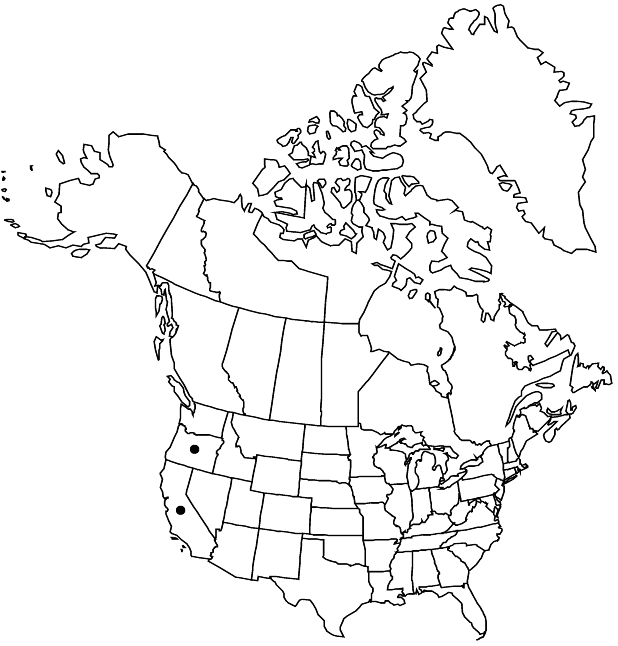Ribes marshallii
Pittonia 1: 31. 1887 ,.
Plants 1–2 m. Stems arched, puberulent; spines at nodes 3, 5–10 mm; prickles on internodes absent. Leaves: petiole 1–4 cm, villous, pubescent, or glabrous; blade round-ovate, 3–5-lobed, cleft less than 1/2 to midrib, 2.5–3.5 cm, base shallowly cordate, surfaces sparsely pubescent, with nonglandular and stipitate-glandular hairs on veins and margins, lobes cuneate-rounded, margins with 2–5 rounded teeth, apex rounded to broadly acute. Inflorescences pendent, solitary flowers or 2–3-flowered racemes, 2–3 cm, axis pubescent, stipitate-glandular. Pedicels not jointed, 2–3 mm, pubescent, stipitate-glandular; bracts broadly ovate, 2–3 mm, pubescent, stipitate-glandular. Flowers: hypanthium green or tinged with purple, campanulate (± as long as wide), 2–4 mm, pubescent; sepals not overlapping, strongly reflexed, purple or rust-red, long-triangular, 10–15 mm; petals connivent, erect, bright yellow, oblong-deltate-spatulate, strongly concave abaxially, 5–6 mm; nectary disc not prominent; stamens nearly 2.5 times as long as petals; filaments linear, 10–15 mm, glabrous; anthers cream, oval, 1–2 mm, apex rounded; ovary villous with weak, glandless bristles; styles connate nearly to stigmas, 10–15 mm, glabrous. Berries palatability not known, dark red, oblong, 10–20 mm, prickles nonglandular, hairs sparse, appressed.
Phenology: Flowering May–Jul.
Habitat: Subalpine and upper montane coniferous forests
Elevation: 1200-2200 m
Discussion
Ribes marshallii occurs in the Coast Ranges of northernmost California and in the Klamath Mountains in Josephine County, Oregon.
Selected References
None.
